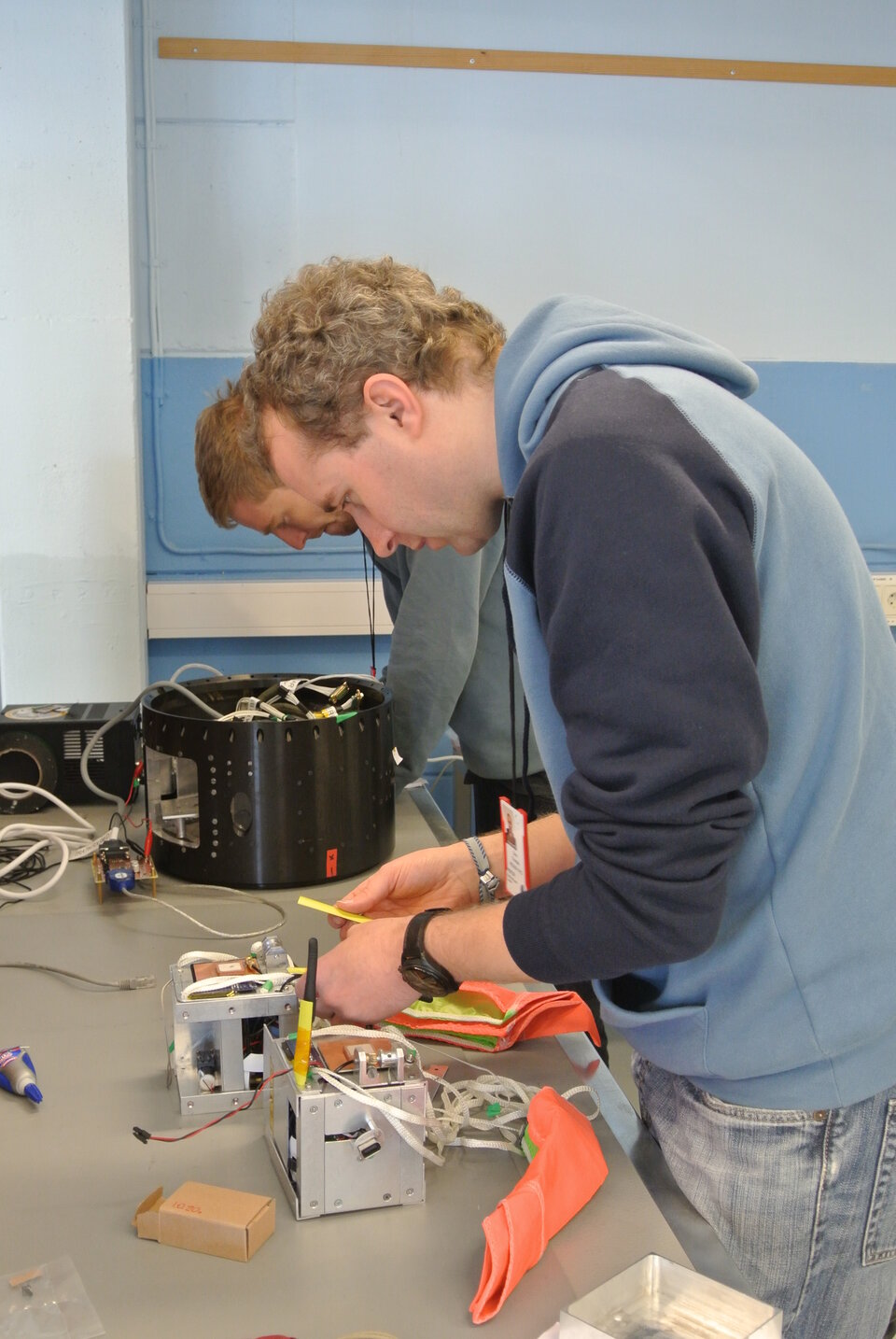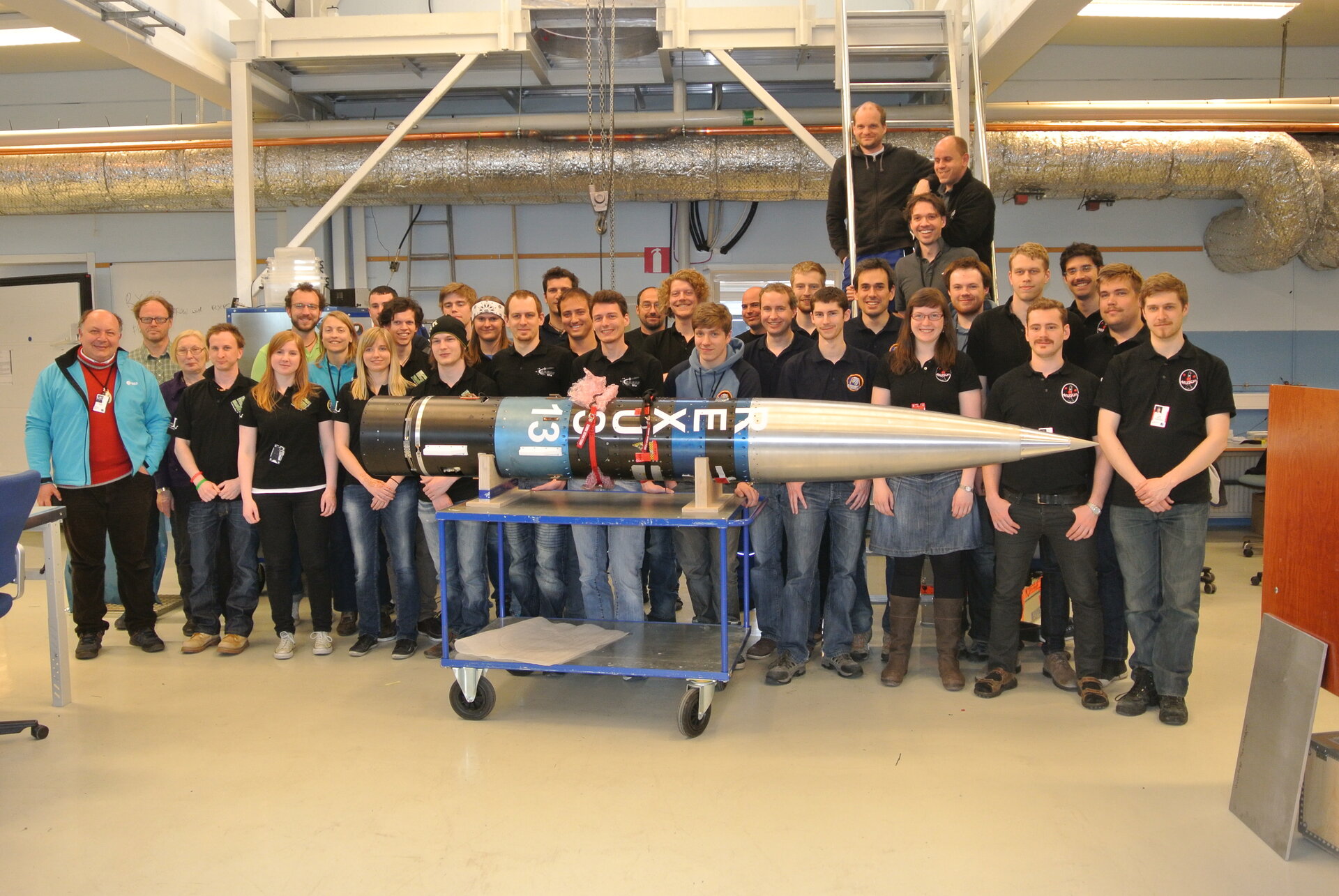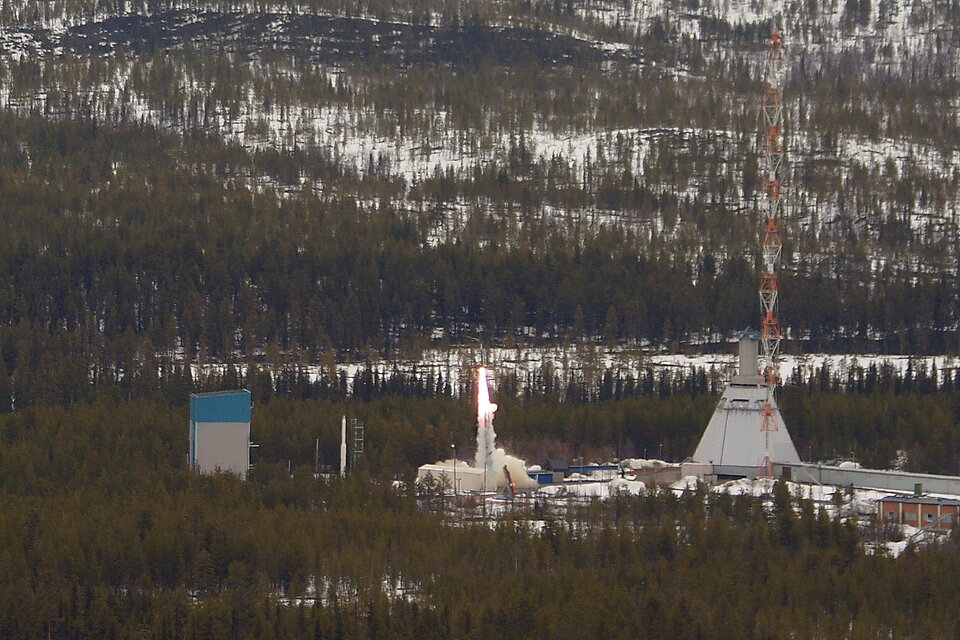The Rexus 2013 campaign concludes
It’s ‘mission complete’ for two sounding rockets, eight experiments, and forty-nine university students. The Rexus 13 and 14 launch campaign has concluded in Sweden. The students all gained invaluable experience in conducting scientific or technological experiments.
The Rocket EXperiments for University Students (REXUS) programme is a unique opportunity. It allows university students from across Europe to design and fly scientific or technological experiments.
This year’s REXUS experiments range from atmospheric measurements, to the behaviour of liquids and soldered alloys in reduced gravity, to the testing of new techniques to deploy structures in space. The flights took place in early May from the Esrange Space Centre in Northern Sweden.
The final preparations for the two rocket launches began on Friday 3 May. The REXUS 14 sounding rocket was rolled into position on the launch pad. Meanwhile, the REXUS 13 teams were completing their last equipment tests before their rocket was also ready.

The teams all gathered for the Flight Readiness Review on Saturday. Monday saw a test countdown and then a short night led to the real countdown beginning at 03.45 on Tuesday 7th May. Two hours and 15 minutes later, the launch window opened and the first four experiments took to the skies.
PoleCATS (United Kingdom) sampled the energy of plasma in the upper atmosphere, CAESAR (Switzerland) experimented with the behaviour of liquids during ascent, and Space Sailors (Germany) deployed a dragsail that could help pull unwanted satellites out of orbit.
"It's an amazing feeling that something you designed got launched into space – of course, it was a valuable experience, but more importantly it was exciting," says a member from the PoleCATS team.
Unfortunately, not all experiments went to plan. Gekko (Hungary) was to measure the electrical conductivity of the atmosphere but experienced a short circuit that prevented it from taking measurements.

REXUS 13 followed, but a day later than planned because of high winds, on Thursday 9 May at 06.00. Although the landing parachute did not deploy, the experiments were not damaged because a secondary parachute slowed the capsule enough that the nose cone could act as a crumple zone and absorb the impact.
MUSCAT (Sweden) deployed four free-flying units that measured temperature and wind speed in the very high atmosphere, where aurora and meteors are seen. During the flight, the student team tracked the units using GPS, and supplied the landing coordinates to the recovery helicopter.
SOLAR (Sweden) studied the effects of soldering alloys in vacuum and pressurized environments under conditions of reduced gravity, and CERESS (Germany) tested a standard platform that could house future REXUS experiments. Unfortunately, the two StrathSat-R (United Kingdom) CubeSats were not ejected from the rocket and failed to deploy their structures in reduced gravity using inflation, robbing the team of their mission objectives.
The full results must now be submitted in 3 months’ times as part of the teams’ final Student Experiment Documents. These will also describe the lessons learned. The teams may also present at the 21st ESA PAC Symposium in Thun, among experts and professionals in sounding rocket and high altitude balloon research.
A member of the Gekko team summed things up: “We had a really great time here in Esrange during the campaign. The entire programme gave us an experience that cannot be compared to anything else. From all points of view it is really great to be involved in the REXUS project, and we hope to be part of it in the future, too.”
Notes for editors:
Of the eight teams, six were sponsored by the Swedish National Space Board (SNSB) and ESA’s Education Office and two by the German Aerospace Center (DLR).
The REXUS educational programme is realised under a bilateral Agency Agreement between DLR and the SNSB. The Swedish share of the payload has been made available to students from other European countries through collaboration with ESA.
EuroLaunch, a cooperation between the Esrange Space Center of SSC and the Mobile Rocket Base (MORABA) of DLR, is responsible for campaign management and the operation of the launch vehicles. Experts from DLR, SSC and ESA provide technical support to the student teams throughout the project.





